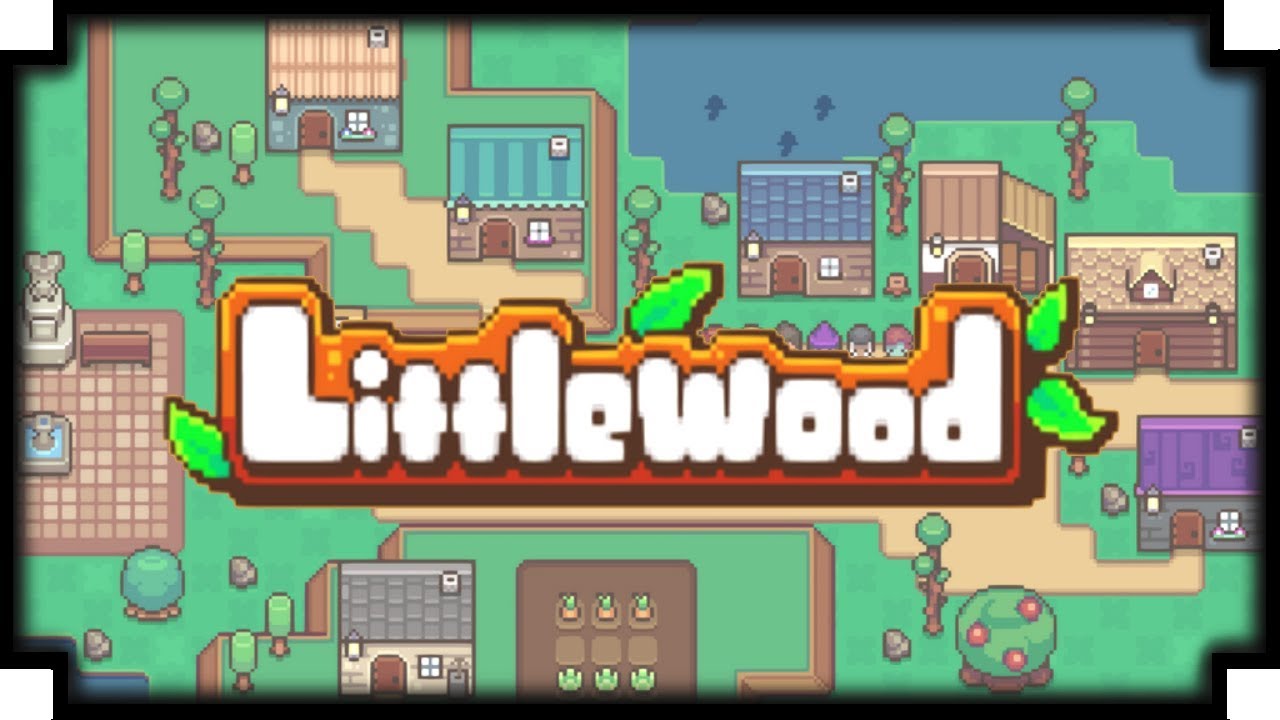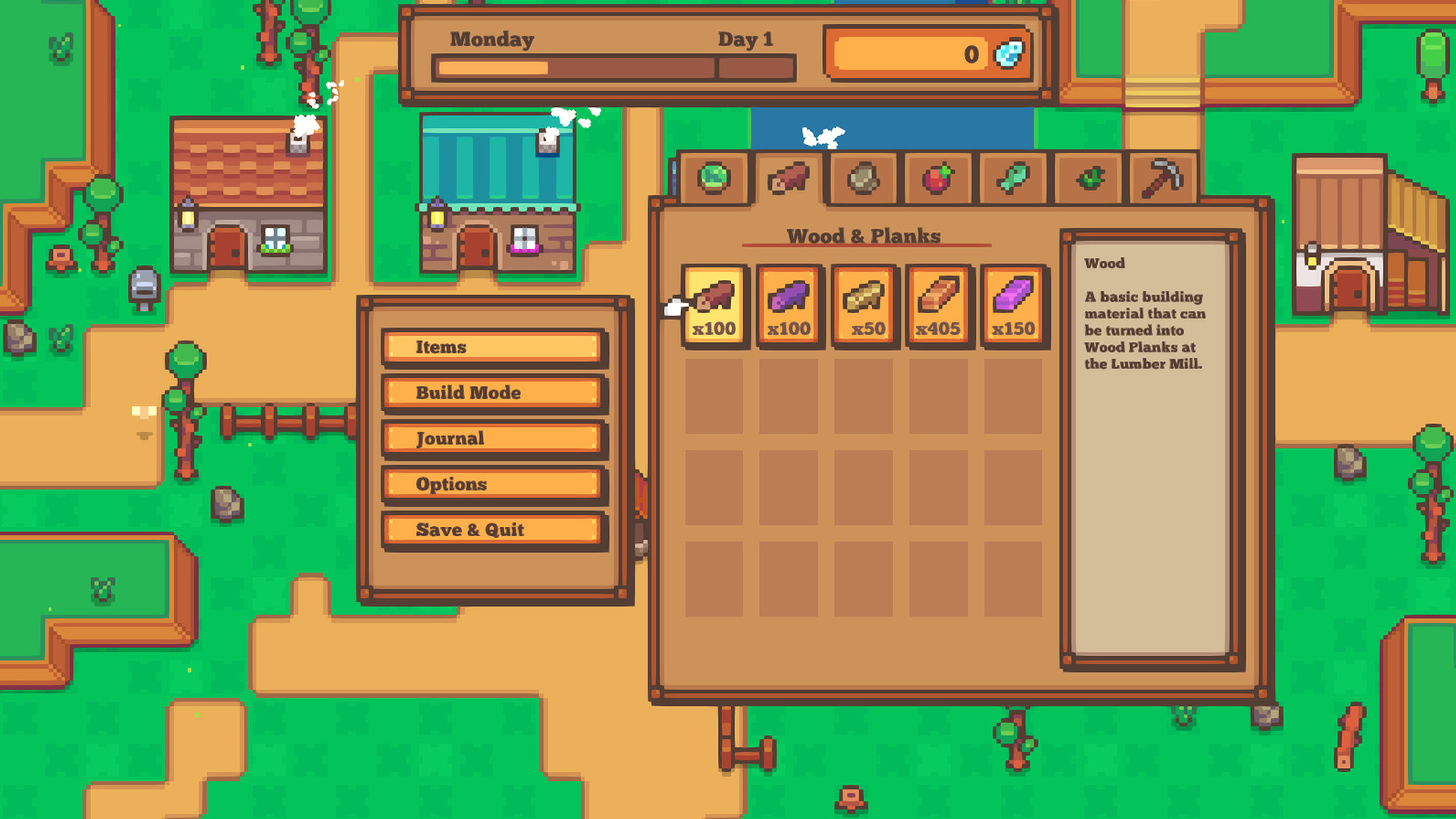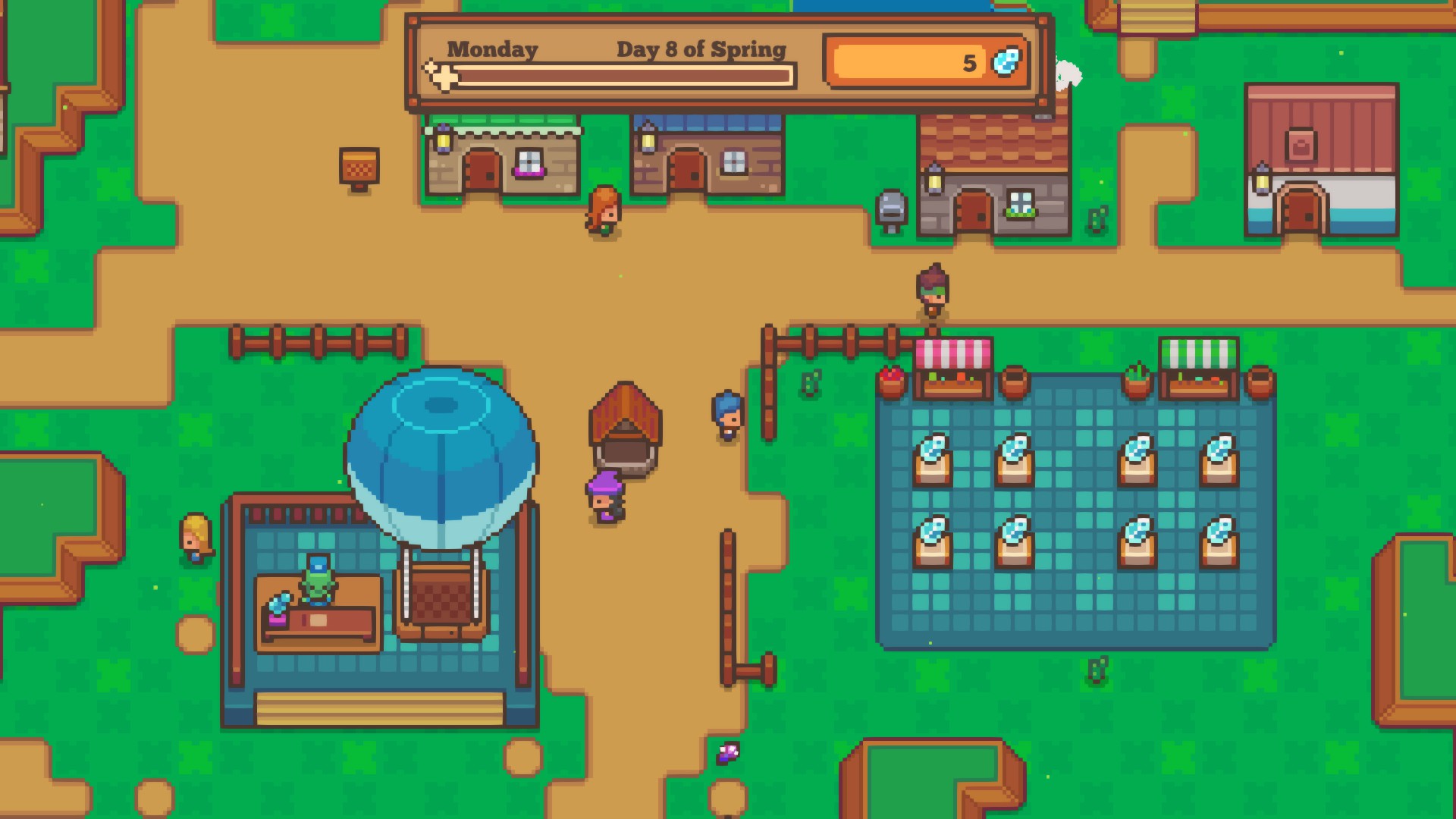Take Your Time Rebuilding the World in Littlewood
Low Stress and Lots of Fun

In the world of Littlewood, the dreaded Dark Wizard was just defeated. In fact, you’re the one who defeated him — a hero without equal, renowned across the entire land. There’s one teensy little problem: you don’t remember a thing. I’m a big fat sucker for Farming RPGs and city builders, and I’d be hard-pressed to pass up the opportunity to check out a game that does both. Littlewood plops you and your companions into an empty clearing with the mission of rebuilding the world, starting with your own little corner.
Getting Around
Everything in Littlewood operates on a tile-based system, even the movement. Pressing a directional key once moves our hero exactly one tile in that direction. It feels a little strange at first; many tile-based games often allow players more precision of movement. Nonetheless, I managed to get used to it pretty quickly. The controls boil down to four directional keys, an accept button, and a cancel button. This simple design serves Littlewood’s casual nature, making it well-suited for playing with one hand.
Obstacles can obstruct your movement as you initially explore the world. Removing rocks, trees, and bugs is an easy enough task, but some of these obstructions are part of the terrain. Paths serve as an easy, early option for getting up cliffs. Complete the right tasks, and the player can earn a “jumping boots” item that allows vaulting into previously inaccessible areas.
Attracting Attention in Littlewood

Your town starts off rather empty, with only you and a handful of other people initially taking up residence. The first few in-game days have you gathering materials and setting up a few buildings. This also leads to leveling up some of your “Hobbies” (Littlewood’s name for skills). Progression through these skill trees eventually unlocks more residents.
Each villager requires a home of their own. 12 of the 15 planned villagers are already in Littlewood, and both new and old ones follow the same pattern. After you’ve met them, they’ll declare their intention to move into the town. This might happen right away or you might have to complete a quest (or simply wait for a few in-game days).
Once they’re all ready to move in, it’s up to you to build them a home. Homes consist of only two basic materials (wood and stone), so it’s rarely difficult to actually construct it. After that’s completed, you can place a desk inside and they’ll tell you the things they’d like to have in their home. Every five requests you fulfill will earn you a special present (one of which is the aforementioned jumping boots).
It sounds like an easy enough gameplay loop, but it takes a forest’s worth of lumber and a mountain-load of ore to get it done. A large portion of time (and energy) is spent on gathering materials to make the things you and your villagers need.
Getting Goods
Littlewood Getting Goods

The opening days of a new Littlewood village restrict the player to the village’s borders. You’re not allowed to leave through the main gate — you’ve already completed your grand adventure, after all — and thus have to spend your days chopping trees, breaking rocks, and starting to shape the town into something you like.
Each villager that moves in provides a blueprint for a new type of building. These can range from a museum that lets you display the game’s various items or a coffee shop which provides temporary buffs to gaining skills. One of the most interesting buildings is the Air Balloon Platform. This lets the player travel to other locales, starting with the Endless Forest and Dust Cavern.
The Endless Forest is primarily used to gather the three core types of wood. There’s also a chance to get some fruit, grab up some weeds, or encounter a rare merchant in the highest level area. The Dusk Cavern provides ample ore-mining opportunities and the ability to acquire Dust, a special currency used to buy items at a shop in the Dust Cavern. While these two initial locations have their focuses, both provide some opportunities for gathering other goods. Fish, bugs, treasure chests, and hostile enemies will pop up in all three levels of both locations.
Gain enough materials and the Air Balloon platform can be upgraded even further. These upgrades grant access to Port City Deluca, the Grand Library, and the Master Forge, each of which offers one or more unique services and sights.
You’re Not on the Clock

What makes Littlewood particularly interesting is the energy system. There is no traditional passage of time — walk around and talk to whomever you like! Only actions like chopping down trees or catching bugs drain energy, changing the time of day to night when around 10% remains. Once the energy bar is full, a prompt pops up warning the player to go to bed. Trying to do even one more action causes the player to pass out, waking up the next day with an energy penalty.
There’s certainly a lot that needs gathering around the village. It takes thousands of logs and rocks (and processing most of these into lumber and bricks, respectively) to complete a village. These basic resources build up your town and improve the lives of your residents. There is also the option to grow crops and trees, cook meals at the tavern, and explore various other avenues of crafting.
Expanding and Upgrading Littlewood

By far, the biggest consumer of resources in Littlewood is upgrading buildings. Each and every building has ten “stars” and it takes three upgrades to earn one star. The first portion of an upgrade costs some money, the second costs some lumber, and the third costs some bricks.
Upgrading a building awards some kind of bonus after attaining three stars, six stars, and ten stars. These milestones also change the required amount of lumber and brick to the next tier up, slowing down progress just a bit. These upgrades are almost always worth the time and effort. Not all upgrades are equal, though — improving the item creation buildings can speed up your work elsewhere.
There is also the opportunity to improve the homes of the residents by fulfilling requests. Some of these are going to be simple things like “Build me a piece of this specific furniture”. Other requests will add in puzzles quite similar to the classic PS2 RPG Dark Cloud. Laura, for example, wants her house within 16 spaces of the Museum but also 20 spaces away from the Smelter. There’s not yet any kind of overlay that shows these ranges, though. It takes trial and error to get things lined up just right.
The growth of Littlewood will lead to more people arriving and unlocking more challenges to overcome, but there’s no rush! This is very much a game that you can take at your own pace, and that’s what makes it so wonderful. In my time with this game, I did find one downside about the town: the lack of a robust screenshot tool. I think people will enjoy showing off their own take on rebuilding the world, and this is functionality that the finished version of the game should definitely have.
Littlewood’s Casual Perfection

Casual games are sometimes derided in the gaming world for not being “hardcore” enough. On the other side of the coin, you might want to play something relaxing and low-stress without having to worry about dodge-canceling ten demons and then countering with an S-rank double-reverse hashtag machine gun combo. My progression through Littlewood gradually revealed a thoughtful design. Having energy serve as the mark of a day ending rather than time lets players progress at their own pace. Consequently, a day will last 5–20 minutes, separating the gameplay loop into perfect, bite-sized chunks. It’s quite easy to sit down and play for hours, too.
That same careful design is further enhanced with the game’s weekly updates. I played Littlewood in 23 hours over the course of a week, and several of my criticisms were just outright quashed in a recent patch. As an example, the Dark Tree enemies could instantly knock out the player character upon spawning in the Endless Forest. Now, the Dark Trees are inactive for a few seconds, allowing a player to move out of the way without getting hit by an unblockable attack.
Another issue I had was with the unlocking of buildings in Port City Deluca. Previously, the Pet Shop served as the first unlockable building. It’s a place that can add adorable dogs and cats into the town at the cost of thousands of Dewdrops, an amount of money that can’t be acquired until the mid-to-late game. The unlock sequence has moved the Card Shop up to the first position; this is a building that’s much more useful in the early-to-mid game.
And no, the card shop is not for greeting cards. In his quest to make a game that has a little something for everyone, the developer has also created a fully-fledged collectible card game. “Tarott Master” makes it possible to play a Yu-Gi-Oh! style card game against many different NPCs in Littlewood. A few nameless players serve as cannon fodder. There is also the “Big Five” — masters of each of Tarott Master’s five elements. Unlocking the Tarrott Monster table opens up the option for playing against any of the village’s residents and earning unique prizes.




